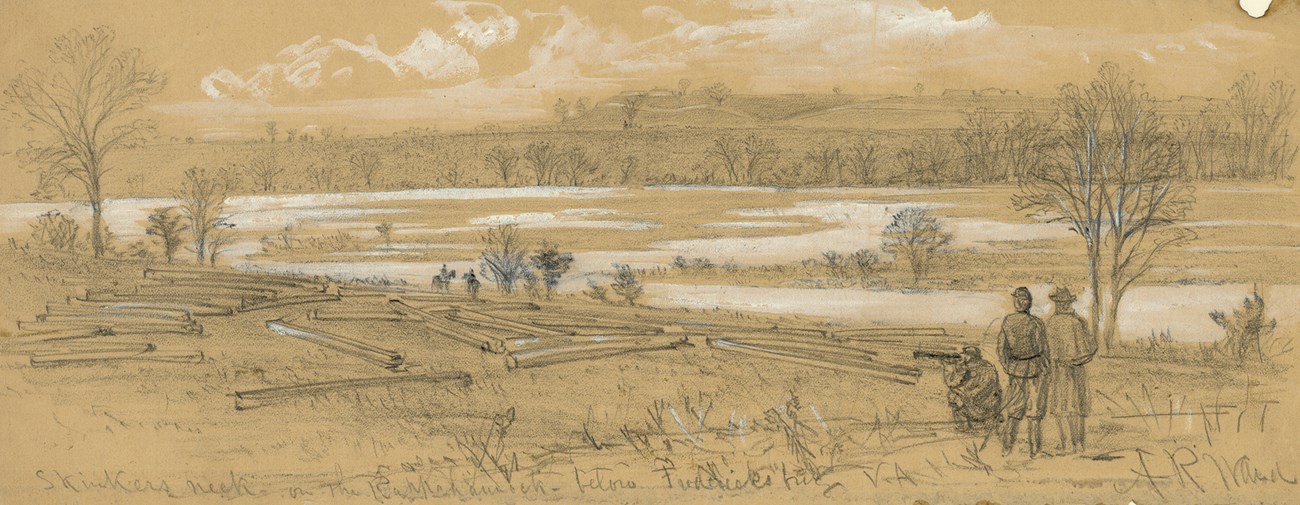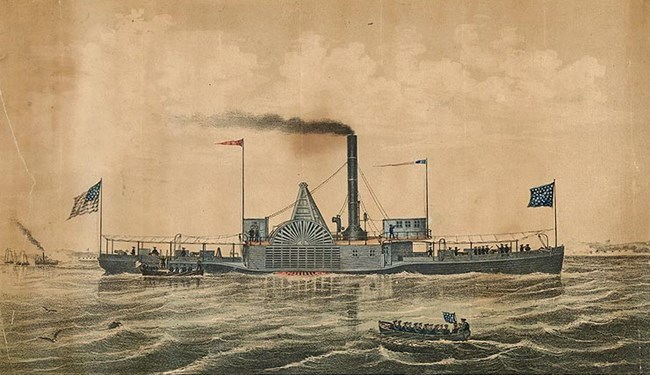Last updated: October 23, 2022
Article
Trouble at Skinkers Neck

Library of Congress
Two weeks had passed since the Army of the Potomac arrived in Falmouth, but one question remained for Ambrose Burnside: How would the army cross the river? The pontoons had arrived, but so did Robert E. Lee’s Confederates. Joseph Hooker, Burnside’s subordinate, wanted to cross at U.S. Ford, above Fredericksburg, but the Rappahannock was too swollen by rain and snow for Burnside’s liking. If the river was too swollen above Fredericksburg, and too defended at the city itself, what about below the city?
Burnside’s idea was to move part of his infantry about fourteen miles below the city and cross at Skinkers Neck, a bend in the Rappahannock that he thought might be less defended. To help cover the crossing, Burnside planned a joint operation with the US Navy’s Potomac Flotilla.

U.S. Naval History and Heritage Command Photograph
As Burnside sent his men marching towards Skinkers Neck for a proposed crossing on December 5, four Federal gunboats steamed towards the rendezvous. There, the first problem arose. Ships under steam power move faster on water than infantry do slogging through mud. The Union gunboats got just below Port Royal, south of Skinkers Neck, when they ran into resistance on December 4. Confederate artillery traded shots with the gunboats, and as the ships retreated, they were hit by rifle fire from the riverbank. The Navy’s involvement in the Skinkers Neck plan fizzled, but also alerted Confederates to Burnside’s plan. Both divisions belonging to D.H. Hill and Jubal Early shuffled towards Skinkers Neck, and were in place when Burnside’s infantry arrived on December 5.
Seeing the far bank crowded by the enemy, the crossing was called off, and the United States troops marched back towards Fredericksburg, exhausted and covered in mud.
So here was Burnside’s situation: he could not cross above Fredericksburg because seasonal rains made the fords impassible, and the Confederates foiled his plan to cross below the city during the naval skirmish on December 4 and subsequent reinforcement of enemy troops at Skinkers Neck on December 5. He could not do nothing, because President Lincoln continued to demand action and success before the new year and the official release of the Emancipation Proclamation. The only thing that remained for Burnside was crossing into Fredericksburg at the heart of the city.
